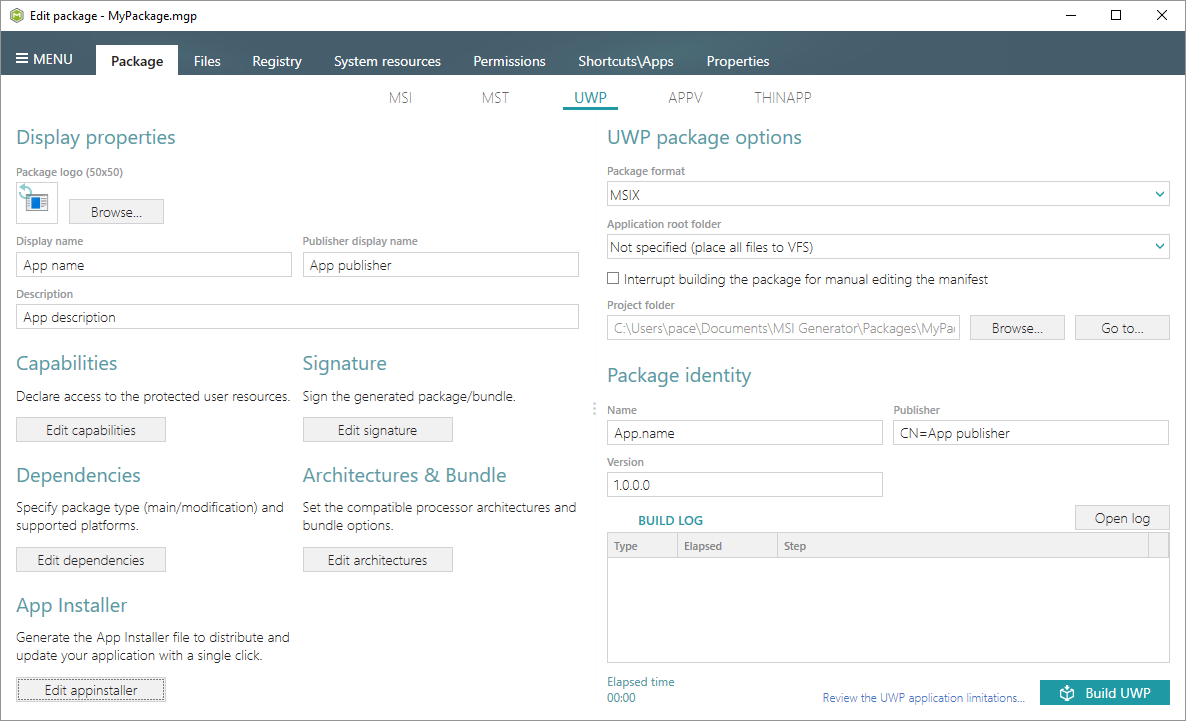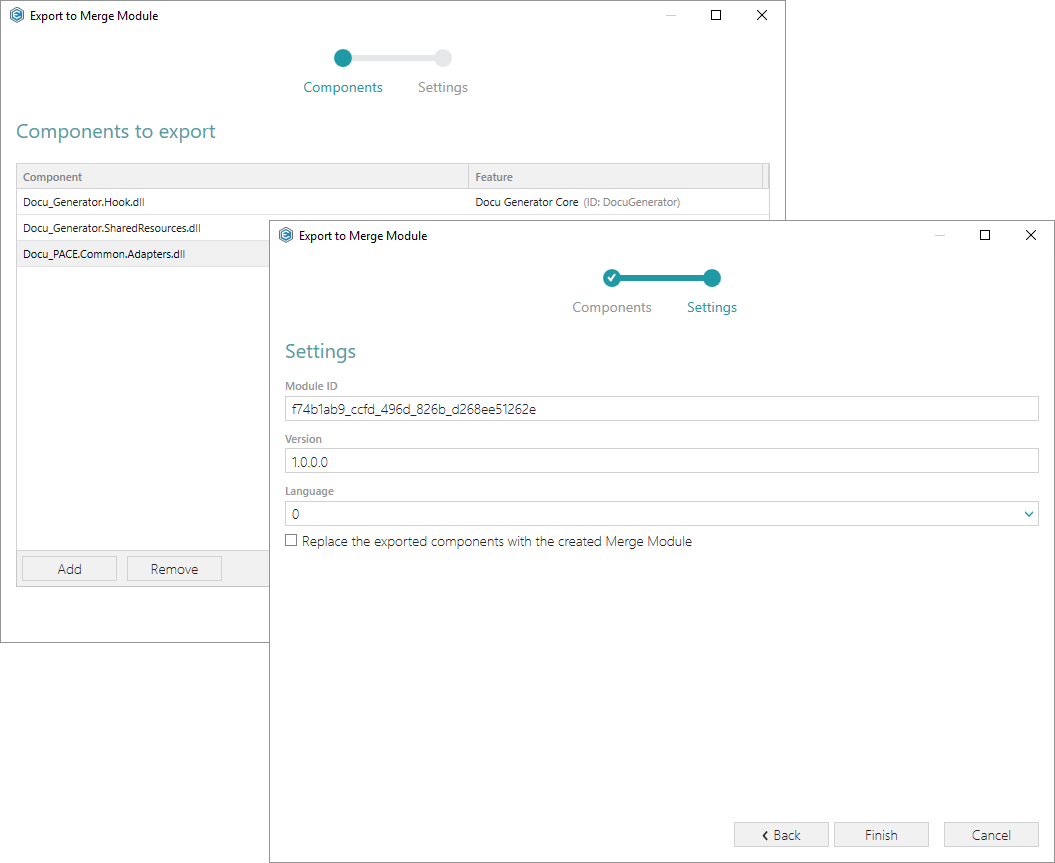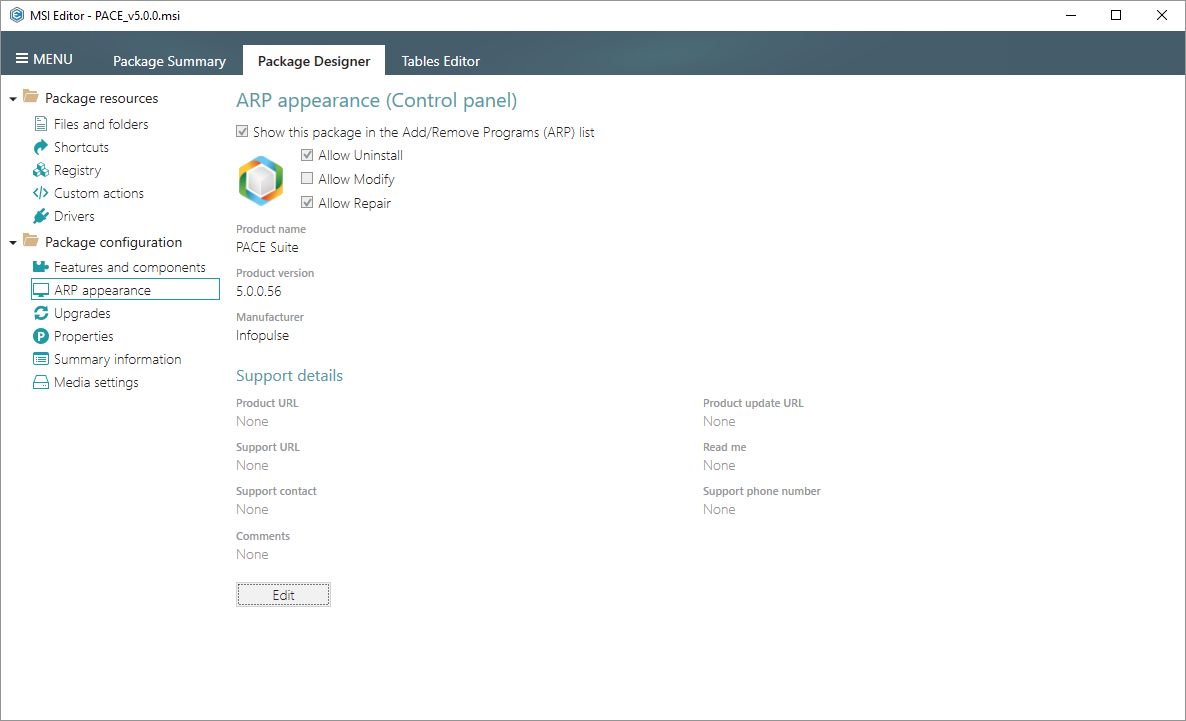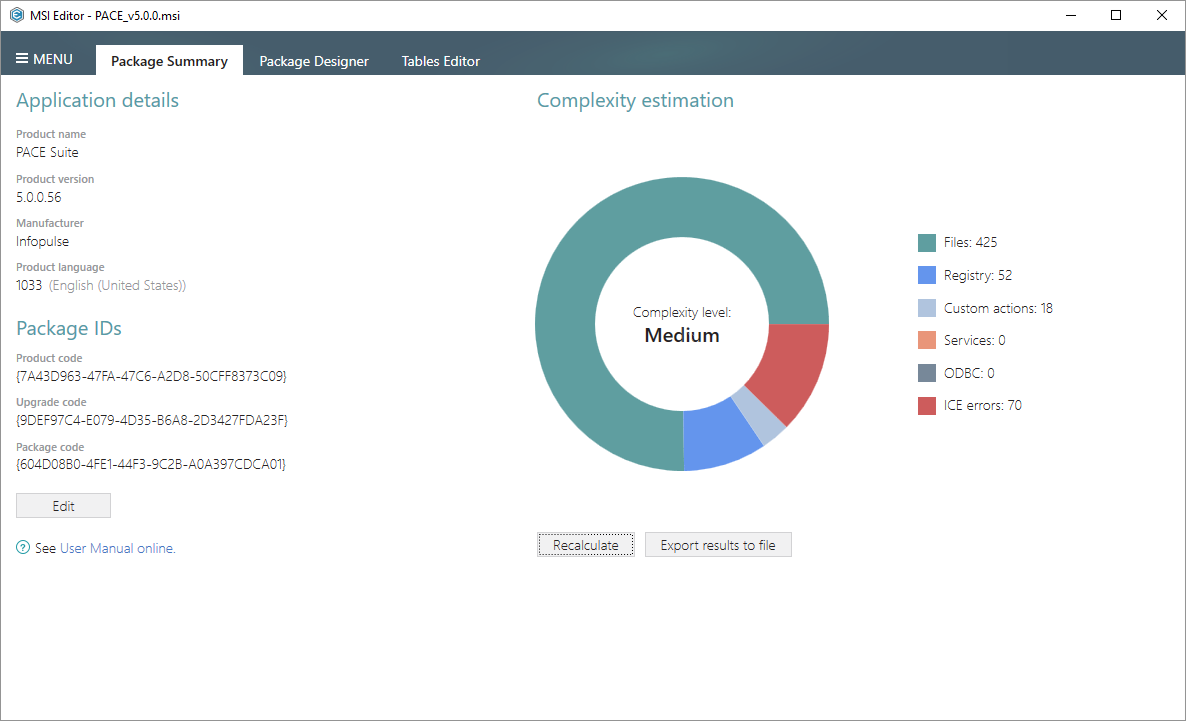PACE Suite 5.1 brings support for creating MSIX Packages – you can now leverage the newest format in a familiar, user-friendly UI. Read on to learn what else is new in this release!~
You were really looking forward to it, admit it. Let’s jump straight to the big announcement – PACE Suite 5.1 now supports creation of MSIX packages – the newest package format for the Universal Windows Platform (UWP) apps. You can leverage all the benefits of Microsoft’s latest format in a familiar, easy-to-use interface of PACE Suite.
There are many other new features to explore, of course. Start with creating Windows Installer Merge Modules and properly deliver shared resources such as files and registry to the system with your packages. Our new approach in MSI Editor is as simple as it gets – just select components, which you want to export, and the export settings.
Clean and user-friendly UI is our forte, and we’re glad to prove it once again with our new Package Summary tab. Read on to have a first look at our new design.
Enhanced Package Designer, easier management of package upgrades, updates to Docu Generator, and more – take a look at everything that’s new below and please enjoy PACE Suite 5.1!
Create MSIX packages in PACE Suite
MSIX is Microsoft’s newest packaging format, built to be safe, secure and reliable. It is based on a combination of .msi, .appx, App-V and ClickOnce installation technologies. PACE Suite 5.1 add the support of MSIX, and you can now leverage all the benefits of the latest packaging format in our user-friendly MSI Generator.
Here are the highlights of what you can do with MSIX in PACE Suite:
- Select the MSIX/APPX output package format
- Create main and modification packages
- Declare the app capabilities
- Select the package supported platforms
- Generate packages for all of the specified processor architectures at once
- Combine the generated packages into the bundle
- Manage the signature settings for packages and bundle
- Generate the AppInstaller file for the non-Store distribution and auto-update of your app
- Edit Manifest manually during the package building
- Control UWP apps (like shortcuts) and their appearance settings
Create Merge Modules (MSM)
Create Windows Installer Merge Modules with new PACE Suite to properly deliver shared resources such as files and registry to the system within your packages.
To create an MSM, open your MSI package with MSI Editor, select components, which you want to export to Merge Module, and specify the exporting settings. Also, you can easily replace the exported components with the created Merge Module.
Manage package upgrades
The package upgrade is the built-in functionality of the Windows Installer – all you need is to add upgrade codes of the old packages into your new package and specify the upgrade settings.
With MSI Editor, you can easily integrate the upgrade of old MSI packages by simply selecting MSI files, which you want to upgrade. MSI Editor will do the rest – import codes, max and min versions, add the necessary properties and standard MSI action for performing the upgrade.
Control Apps & Features appearance
Control how the MSI package will be displayed in the Apps & Features list (also Programs and Features in the Control Panel).
In addition to selecting the ARP icon, ‘Remove’, ‘Repair’, and ‘Modify’ buttons, the latest version of MSI Editor allows managing support properties such as product, support URLs, contacts and others. Also, here you can change app details, which will be displayed in the app list.
New Package Summary Tab
The brand new and cleaner Package Summary tab displays the general information about the app inside your package, main package IDs such as product, upgrade and package codes, a beautiful complexity estimation chart, and the link to the help documentation.
All the information you need in one place!
There’s so much more to enjoy in this new release! Check PACE Suite 5.1 Release Notes for the complete description of all the new stuff. Don’t forget to check our PACE Suite User Manual – your go-to guide to software packaging with PACE Suite.

